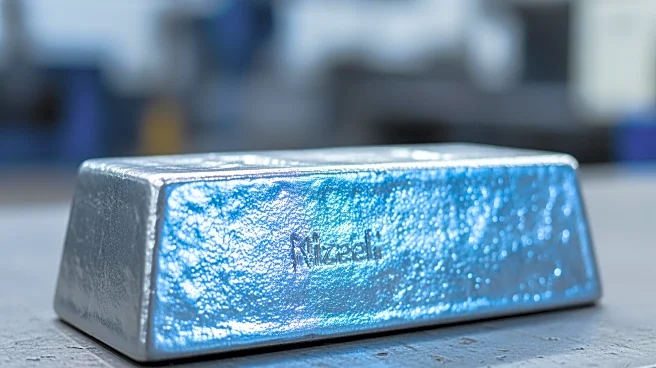What's Happening?
The US Mint has ceased penny production due to cost inefficiencies, shifting focus to the nickel, which faces similar challenges. Since 2006, the Mint has incurred losses on both pennies and nickels, with
nickel production costs currently exceeding their intrinsic value. The Mint, alongside its supplier Artazn, is exploring ways to reduce nickel production costs below five cents per coin. Despite these efforts, there are no immediate plans to discontinue nickel production. The collaboration aims to address the high costs associated with the metals used in coin production, particularly copper and nickel, which are among the most expensive. The initiative is driven by the need to maintain the practicality of coins in an increasingly cashless economy.
Why It's Important?
The discontinuation of penny production and the focus on reducing nickel costs highlight the broader economic pressures faced by the US Mint. This situation underscores the challenges of maintaining coin production in a digital economy where cash usage is declining. The efforts to reduce production costs are crucial for the Mint's financial sustainability and could influence future decisions regarding coin circulation. The shift away from cash transactions primarily benefits large banks and credit card issuers, potentially impacting lower-income individuals who rely more on cash. The collaboration between the Mint and Artazn reflects a strategic approach to adapt to changing economic conditions while preserving the utility of coins.
What's Next?
The US Mint and Artazn are working towards achieving a nickel production cost near five cents per coin, with potential realization within a year. This effort involves developing a 'new' nickel that maintains the appearance of the current coin. As the Mint navigates these production challenges, stakeholders such as banks, retailers, and consumers may need to adapt to potential changes in coin availability and usage. The ongoing shift towards a cashless economy could further influence the Mint's strategies and decisions regarding coin production and circulation.
Beyond the Headlines
The move away from coins and towards a cashless economy raises ethical and social considerations, particularly for individuals who rely on cash transactions. The potential disappearance of coins could exacerbate financial exclusion for lower-income groups. Additionally, the environmental impact of coin production, including the use of expensive metals, highlights the need for sustainable practices in minting operations. The collaboration between the Mint and Artazn may also set a precedent for future partnerships aimed at addressing economic and environmental challenges in coin production.











